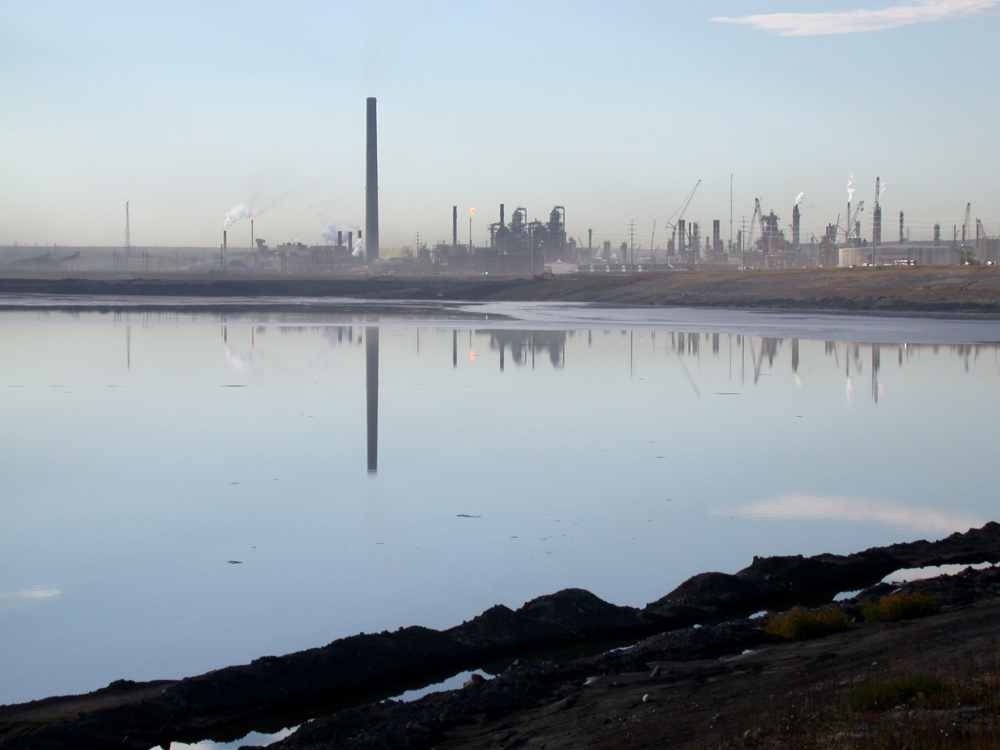CALGARY — Nina Lothian, director of responsible fossil fuels at the Pembina Institute, made the following statement in response to the Commission for Environmental Cooperation's final report on Alberta tailings ponds, released Sept. 3, 2020, which found scientific evidence of contaminated water seeping into groundwater around oilsands tailings ponds.
"This finding represents validation by an independent third party of well-understood environmental damage caused by the oilsands, for which government action to hold polluters to account is long overdue.
“The Pembina Institute drew attention to the problem of tailings ponds as far back as 2009, and warned of seepage issues in 2014. Successive federal and provincial governments have not taken the actions required — including setting enforceable timelines for tailings treatment and reclamation — to prevent this kind of impact and accelerate the return to a natural landscape. Alberta revised its tailings management framework in 2016, but the new regulations do not clearly outline expectations, implement timelines, enforce compliance or incentivize solutions.
“Ultimately, water from the fluid tailings ponds must be treated and discharged into the Athabasca River, and the federal government, under the jurisdiction of the Fisheries Act, is in the process of setting the quality and quantity standards. It should use this opportunity to ensure any release of treated tailings water does not damage the environment, and also to address the critical problem of vast tailings ponds seeping into the landscape.
“We agree with the federal environment minister's comment that tailings ponds were meant to be temporary structures, however they have grown exponentially since oilsands mining began, to an unmanageable 1.3 trillion liters —enough to fill 400,000 Olympic swimming pools. It is a critical time for federal and provincial governments to implement a comprehensive strategy to address tailings liabilities, contain the damage and prevent the problem from getting worse.”
[30]
Background
- The Pembina Institute has been working on issues related to tailings since 2009, previously warning about tailings seepage more than five year ago.
- Tailings are a byproduct of the oilsands mining extraction process and contain sand, silt and toxic compounds, seepage of untreated tailings water into groundwater may negatively impact living things down stream.
- Since oilsands mining operations began in 1967, 1.3 trillion litres of fluid tailings has accumulated in these open ponds in the lower Athabasca region. This is enough to fill 400,000 Olympic swimming pools.
- As early as 1973, the Government of Alberta identified oilsands tailings as untreatable with existing technologies and noted the continuous accumulation of liquid tailings was not acceptable and that ponds must be restricted in their size, location and duration of use.
- The Government of Alberta holds less than 3 per cent security on the estimated $31 billion in oilsands mine liabilities.
- This report by the Commission for Environmental Cooperation finds there is scientific evidence of seepage of tailings into the groundwater near tailings ponds. The Canadian Fisheries Act (Subsection 36(3)), prohibits the release of any deleterious substance into water frequented by fish. Tailings are a deleterious substance, containing toxic compounds such as napthenic acids and heavy metals. Despite the clear contravention of the law, no prosecutions have occurred.
- The Commission for Environmental Cooperation was set up under the auspices of the North American Agreement on Environmental Cooperation (NAAEC) between the governments of Canada, Mexico and the USA, a legally binding, multilateral treaty supporting the environmental provisions under the United States-Mexico-Canada Free Trade Agreement (USMCA, formerly known as NAFTA).
- Federal environment minister Jonathan Wilkinson reacted to the release of the report in a video, noting the federal government finds the conclusions of the report troubling, that tailings ponds were meant to be temporary and that Canada must put technologies and regulations in place that ensure the tailings ponds are eventually removed and the land reclaimed.
Contact
Michelle Bartleman (English/français)
Alberta Communications Lead, Pembina Institute
587-588-5744
About the Pembina Institute
The Pembina Institute is a non-profit think-tank that advocates for strong, effective policies to support Canada’s clean energy transition. We have offices in Vancouver, Calgary, Edmonton, Ottawa and Toronto. Learn more: www.pembina.org




